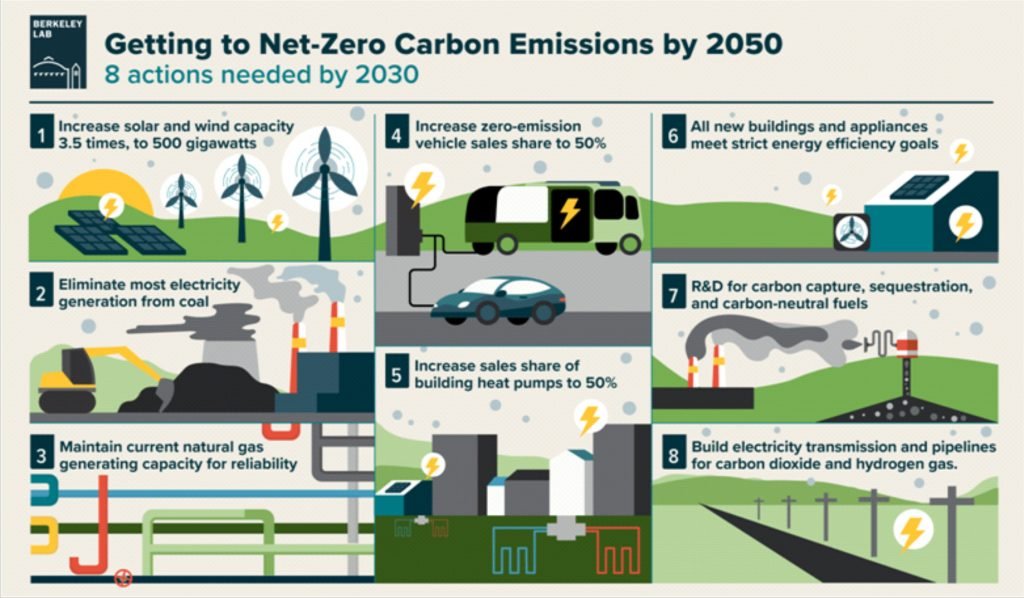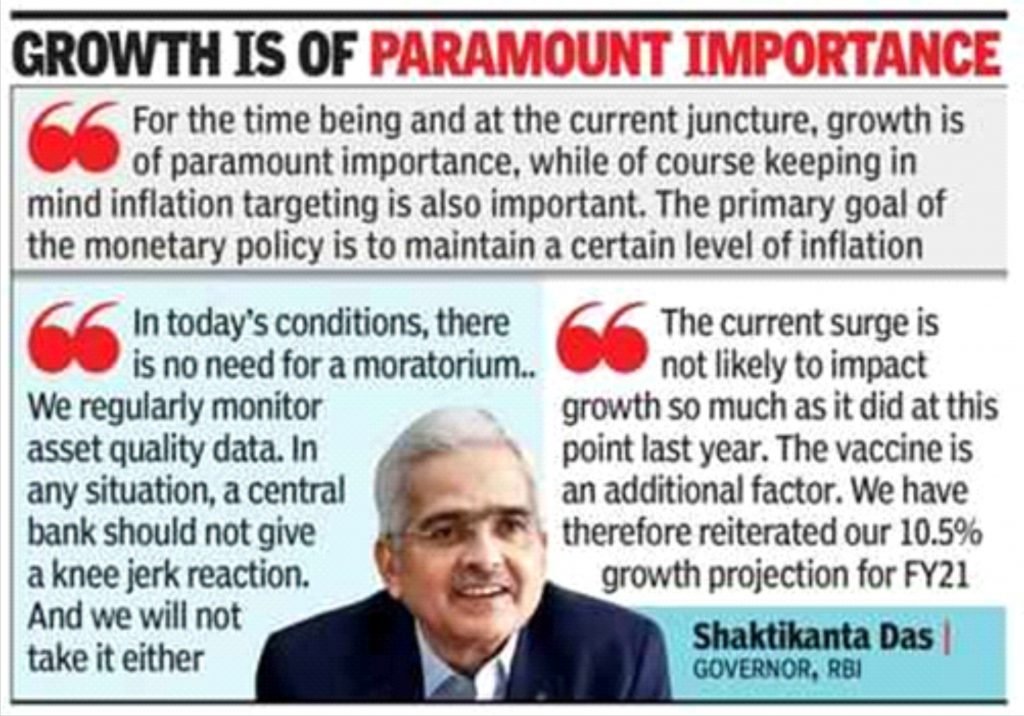Current Affairs (8th April 2021)
Net-zero
Context:
- John Kerry, the US President’s Special Envoy on Climate, is currently on a three-day visit to India trying to rekindle a climate change partnership that had been all but put on hold during the four years of the Donald Trump administration.
About:
- The immediate purpose of the visit is to exchange notes ahead of the virtual Climate Leaders’ Summit convened by US President on April 22-23 where Indian Prime Minister is one of the invitees.
- This is Biden’s first big international intervention in climate change, and his administration would be keen to ensure a substantive outcome from it.
- India, the world’s third biggest emitter of greenhouse gases, after the US and China, is the only major player holding out.
- One of the objectives of Kerry’s visit is to explore whether New Delhi can be nudged to drop its hard opposition and open up to the possibility of pledging itself to a 2050 net-zero goal.
The net-zero goal
- Net-zero, which is also referred to as carbon-neutrality, does not mean that a country would bring down its emissions to zero.
- Rather, net-zero is a state in which a country’s emissions are compensated by absorption and removal of greenhouse gases from the atmosphere.
- Absorption of the emissions can be increased by creating more carbon sinks such as forests, while removal of gases from the atmosphere requires futuristic technologies such as carbon capture and storage.
- This way, it is even possible for a country to have negative emissions, if the absorption and removal exceed the actual emissions.
- A good example is Bhutan which is often described as carbon-negative because it absorbs more than it emits.
- India’s emissions are likely to grow at the fastest pace in the world, as it presses for higher growth to pull hundreds of millions of people out of poverty. No amount of afforestation or reforestation would be able to compensate for the increased emissions. Most of the carbon removal technologies right now are either unreliable or very expensive.

Production Linked Incentive (PLI) Scheme
Context:
- The Union Cabinet has approved the Production Linked Incentive (PLI) Scheme– ‘National Programme on High Efficiency Solar PV Modules’ for achieving manufacturing capacity of Giga Watt with an outlay of Rs 4,500 crore.
- The Union Cabinet also approved the PLI Scheme for White Goods – Air Conditioners and LED Lights with a budgetary outlay of Rs 6,238 crore.
About:
- Solar capacity addition presently depends largely upon imported solar PV cells and modules as the domestic manufacturing industry has limited operational capacities of solar PV cells and modules.
- Solar PV manufacturers will be selected through a transparent competitive bidding process and PLI will be disbursed for 5 years post commissioning of solar PV manufacturing plants, on sales of high efficiency solar PV modules.
- Manufacturers will be rewarded for higher efficiencies of solar PV modules and for sourcing their material from the domestic market. Thus, the PLI amount will increase with increased module efficiency and increased local value addition.
- The prime objective of the PLI scheme is to make manufacturing in India globally competitive by removing sectoral disabilities, creating economies of scale and ensuring efficiencies.
- The scheme is expected to attract global investments, generate large scale employment opportunities, and enhance exports substantially.
- The PLI Scheme for White Goods will extend an incentive of 4 to 6 per cent on incremental sales of goods manufactured in India for a period of five years to companies engaged in manufacturing of Air Conditioners and LED Lights.
Significance:
- The National Programme on High Efficiency Solar PV Modules will reduce import dependence in a strategic sector like electricity and will also support the Atmanirbhar Bharat initiative.
- The scheme will add an additional 10-thousand-MegaWatt capacity of integrated solar Photovoltaic manufacturing plants and will bring direct investment of around Rs 17,200 crore in solar PV manufacturing projects.
- Direct employment of about 30 thousand and Indirect employment of about 1 lakh 20 thousand persons will be generated.
- Several global and domestic companies including MSMEs are likely to benefit from the Scheme.
Madhukranti portal and Honey Corners
Context:
- Agriculture and Farmers’ Welfare Minister launched Madhukranti portal and Honey Corners of National Agricultural Cooperative Marketing Federation, NAFED in New Delhi.
About:
- This portal is being developed for online registration to achieve a traceability source of Honey and other beehive products on a digital platform.
- This will also help in checking the quality and source of adulteration of honey.
- Madhukranti portal is an initiative of National Bee Board under National Beekeeping and Honey Mission.
- An MoU between National Bee Board and Indian Bank was signed for this project.
- Honey Mission will lead to increase in income of farmers, employment generation and increase in exports.
- The sweet revolution should spread all over the country and Indian honey should meet global standards.
Film certification tribunal
Context:
- Recently, the government by an ordinance abolished the Film Certificate Appellate Tribunal (FCAT), which heard appeals by filmmakers seeking certification for their films.
About:
- The Tribunals Reforms (Rationalisation And Conditions Of Service) Ordinance, 2021, which came into effect on 4 April 2021, amends the Cinematograph Act, 1952 by omitting some sections and replacing the word “Tribunal” with “High Court” in other sections.
- In effect, filmmakers will now have to approach the High Court with appeals they would have earlier filed with the NCAT.
The Tribunal
- FCAT was a statutory body constituted set up by the Ministry of Information & Broadcasting in 1983, under Section 5D of the Cinematograph Act, 1952.
- Its main job was to hear appeals filed under Section 5C of the Cinematograph Act, by applicants for certification aggrieved by the decision of the Central Board of Film Certification (CBFC).
- The tribunal was headed by a chairperson and had four other members, including a Secretary appointed by the Government of India to handle.
- The Tribunal was headquartered in New Delhi.
What it did?
- In India, all films must have a CBFC certificate if they are to be released theatrically, telecast on television, or displayed publicly in any way.
- The CBFC — which consists of a Chairperson and 23 members, all appointed by the Government of India — certifies films under four categories:
- U: Unrestricted public exhibition (Suitable for all age groups)
- U/A: Parental guidance for children under age 12
- A: Restricted to adults (Suitable for 18 years and above
- S: Restricted to a specialised group of people, such as engineers, doctors or scientists.
- The CBFC can also deny certification a film. On several occasions when a filmmaker or producer has not been satisfied with the CBFC’s certification, or with a denial, they have appealed to the FCAT. And in many cases, the FCAT has overturned the CBFC decision.
Government Securities Acquisition Program (G-SAP)
Context:
- Reserve Bank of India moved to quell the concerns of market participants over the rise in bond yields. The Governor enthused the markets with Government Securities Acquisition Program (G-SAP) through which it will purchase government securities worth Rs 1 lakh crore in Q1FY22.

About:
- RBI must ensure that the government’s borrowing program goes through without causing disruption.
- Through the Government Security Acquisition Programme RBI is looking to provide more comfort to the bond market in the backdrop of government’s elevated borrowing for this year.
What other benefits does the G-SAP offer?
- It will provide certainty to the bond market participants about RBI’s commitment of support to bond market in FY22.
- The RBI has purchased ~Rs. 3.13 trillion worth of bonds from the secondary market in FY21. A structured purchase program of similar size such as this will calm investors’ nerves and help market participants to bid better in scheduled auctions and reduce volatility in bond prices.
- The announcement of this structured programme will help reduce the spread between the repo rate and the 10-year government bond yield. That in turn will also help to reduce the aggregate cost of borrowing for the Center and states in FY22.
‘Anamaya’
Context:
- Union Minister for Health and Family Welfare along with Union Minister of Tribal Affairs launched ‘Anamaya’, the Tribal Health Collaborative through video conference.
About:
- A multi-stakeholder initiative supported by Piramal Foundation and Bill and Melinda Gates Foundation (BMGF), ‘Anameya’ will converge efforts of various Government agencies and organisations to enhance the health and nutrition status of the tribal communities of India.
- In the past one year, several efforts have been made by the Health Ministry to jointly address the health gaps of the tribal communities with the Ministry of Tribal Affairs.
- Recently, the Tribal TB Initiative was launched by both the Ministries to fulfil the Prime Minister’s goal of ‘TB Mukt Bharat’ by 2025, five years ahead of the global deadline.

